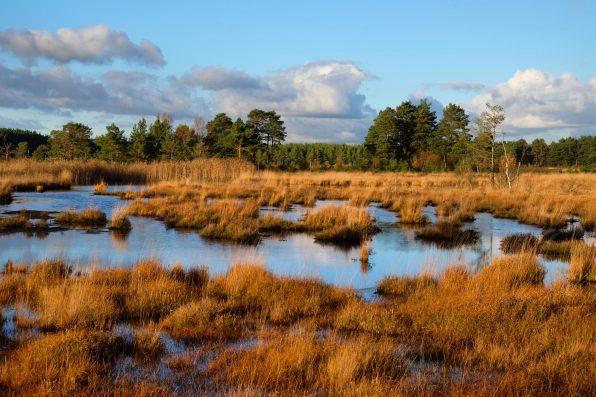The Exceptionally Well-Preserved Human Remains Of Over 177 Individuals Dating Back 8,000 Years Ago Were Unearthed From Windover Bog In Florida, One Of North America’s Most Significant Bog Body Sites

During the construction of a new road in 1982, a backhoe operator in Florida dug up an ancient burial site, although he didn’t know it at the time.
When he spotted a pale rock on the ground, he picked it up to examine it and realized the rock was actually a human skull. His accidental discovery triggered a thorough investigation into the area and became one of the most spectacular archaeological projects of the 20th century.
All in all, over 177 human remains dating back 7,000 to 8,000 years ago were unearthed from a peat-bottomed pond known as the Windover Bog.
The corpses were so well-preserved that some of them still even had brain tissue. The Windover archaeological site is among the most significant bog body sites in North America.
When scientists analyzed the DNA from the remains, they found a shared allele in the genome, indicating that the bodies were related.
Most of the bodies were buried on their sides in a flexed position and sunk to a depth of about three feet. Excavations at the bog lasted from 1984 to 1987, resulting in the discovery of 177 individuals who were of all different ages.
Decades after the initial excavations, researchers revealed that the people buried at Windover were from Asia but had migrated to North America.
However, they did not seem to be related to any existing Native American tribe or prehistoric peoples. So, they must’ve either gone extinct or their population was severely reduced before modern humans evolved.
These burials were preserved so well because of the peat at the bog. Peat is made of layers of decomposing organic materials, primarily vegetation. It provides an oxygen-free environment with little to no acidity that allows skeletons to survive for thousands of years.

Alexandra – stock.adobe.com – illustrative purposes only
The peat prevents any bacteria from reaching the remains and causing them to deteriorate. Once the bodies are excavated and exposed to sunlight and air, they start decomposing at rapid rates.
This made it particularly challenging for archaeologists to dig out the artifacts. It was crucial for the peat to stay moist to protect the bodies from decomposition, but they also needed to remove enough water to perform the excavation.
So, they developed a demucking system and installed 158 well points around the pond’s edge to move some water away from the site.
They also used wooden tools to slowly and carefully scrape away at the peat that was stuck to the bones.
Sharpened shovels and trowels were used, but wooden chopsticks from nearby Chinese restaurants were what worked best for the job.
Such an archaeological wonder has allowed archaeologists to learn more about prehistoric burial practices and lifestyles.
There are almost certainly other similar bogs containing bodies in Florida, but whether a find the size of Windover will ever occur again remains to be seen.
Sign up for Chip Chick’s newsletter and get stories like this delivered to your inbox.
More About:News